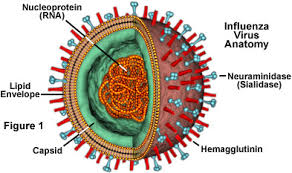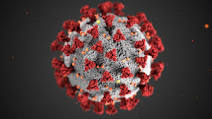Control Stress and Fear with Covid19
 Dr. Niladri Sekhar Dash is Professor at Linguistic Research Unit, Indian Statistical Institute, Calcutta, India. He is an expert in Corpus Linguistics. He has some very good advice to give everyone on how to control stress and fear caused by Covid19 Pandemic.
Dr. Niladri Sekhar Dash is Professor at Linguistic Research Unit, Indian Statistical Institute, Calcutta, India. He is an expert in Corpus Linguistics. He has some very good advice to give everyone on how to control stress and fear caused by Covid19 Pandemic.
It’s interesting to note that all the methods that are part of Stress Help Center’s program are included in his list of suggestions to control stress and fear. You receive a variety of choices over a period of 8 weeks. You can have it now for only $2.99
He writes:
Dear Friends,
I share here my last three days’ effort in compiling data from the Internet. I shall be happy if you practice some of these tasks to manage your stress, anxiety, tension, and fear. My best wishes and regards.
How to kill Stress, Anxiety, and Tension (SAT)
Control Stress and Fear
1. Meditate, Meditate, and Meditate
Chilling out has a direct impact on stress. Research out of Georgetown University Medical Center finds that after an eight-week course in mindful meditation, people with anxiety disorders lowered inflammatory markers and stress hormones in their blood by 15 per cent. Meditation brings short-term stress relief as well as lasting stress management benefits. There are many different forms of meditation to try — each one is unique and brings its own appeal. You might develop a mantra that you repeat in your mind as you take slow deep breaths. Or, you might take a few minutes to practice mindfulness, which involves being in the moment. Simply pay attention to what you see, hear, taste, touch, and smell.
2. Sit Up Straight
Research published in the Journal Health Psychology finds that — compared to a hunched over position — sitting upright in the face of stress can boost self-esteem, fending off further angst. The idea boils down to something called embodied cognition, an idea that our bodies impact our emotions (and vice versa). And it could be that simply feeling taller boosts confidence, shooing stress away, researchers say.
3. Breathe the Right Way
There are reasons doctors sometimes prescribe breathing exercises to people struggling with truly stressful times. Deep breathing — which encourages the full exchange of oxygen in the body — activates your body’s calming parasympathetic response, lowering levels of inflammatory compounds linked to stress.
4. Seek Out Nature (and Sunshine)
A 60-minute walk in the park can calm the mind, lowering activity in a brain region linked to depression, finds Stanford University research. It is not just the walking either: People strolling urban settings filled with traffic instead of trees did not reap the benefits. Our bodies were designed to be in and near green spaces, forests, or the ocean, researchers say. Thus, studies confirm that these spaces are inherently relaxing.
5. Say Thank You
Scientists are no strangers to the powers of gratitude. In fact, gratitude is linked to 23 per cent lower levels of the stress hormone cortisol. Even more: A study out of the University of California San Diego’s School of Medicine found that grateful folks were happier, slept better, had more energy, and had lower levels of inflammatory biomarkers — some of which correlated with heart health.
6. Sleep It Off
While you snooze, your brain processes all of the emotions and happenings from the day — helping your mind remain even-keeled and keeping stress levels from boiling up. That’s why a lack of shuteye can impair your ability to control your emotions, including anxiety and stress.
7. Phone a Friend
The healthiest (and calmest) among us tend to have something in common: a huge social life. Because friends and family can help us talk through and manage life’s stressors, a strong support system is often linked with being more resilient in the face of stress itself. Making a phone call and releasing your pent-up emotions to the person of your heart can provide you with tremendous relief from stress and tension. Whether listening to you vent your frustrations or offering words of encouragement, friends can provide needed social support. If your friend can make you laugh, all the better, since laughter has been shown to reduce stress and tension.
8. Stop the Snowball Effect
Dwelling or ruminating over things that have happened or things that may happen is very dangerous. Research published in the Journal PLOS one finds that brooding over negative events is the №1 biggest predictor of issues like depression and anxiety and plays a huge role in how much stress you experience. Keeping yourself away from past events and future fears are rubrics that can make you cool and serene.
9. Get a Hug from a Loved One
Physical touch can do a lot to relieve your stress. Hugging a loved one can be especially beneficial. When you hug someone, oxytocin (also known as the “cuddle hormone”) is released. Oxytocin is associated with higher levels of happiness and lower levels of stress. Oxytocin also causes a reduction in blood pressure. It reduces the stress hormone norepinephrine and can produce a sense of relaxation. So don’t be afraid to ask a loved one for a hug if you need it. It’s good for both of you and it can be one of the simplest forms of stress relief available.
10. Express Gratitude
Gratitude helps you recognize all the things you have to be thankful for. Whether you’re grateful for a sunny day or thankful you arrived at work safely, think about all the good things you have in life. Gratitude also reminds you of all of the resources you have to cope with stress, which can be quite empowering. Studies also show grateful people enjoy better mental health, lower stress, and a better quality of life. So whether you decide to make it a habit to identify what you’re grateful for as you sit around the dinner table or you decide to write down three things you’re grateful for in a gratitude journal every day, make gratitude a regular habit.
11. Eat Green Vegetables
Comfort foods aren’t so comforting. It’s the vitamins, minerals, and antioxidants in healthy eat that lower your stress levels. Take a study from the University of Otago — it found that students who ate more fruits and vegetables also tended to feel calmer and happier.
12. Enjoy Aromatherapy
Aromatherapy has real benefits for stress relief — it can help you to feel energized, more relaxed, or more present in the moment. Emerging research suggests certain scents can alter brain wave activity and decrease stress hormones in the body. So whether you enjoy candles, diffusers, or body products, consider incorporating some aromatherapy into your day.
13. Create Artwork
Getting in touch with your creative side may have been easy for you during childhood, but if you’ve lost touch with your penchant for artwork, it’s not too late to pick it up again. If you aren’t into drawing or painting, consider colouring in a colouring book. Adult colouring books have risen in popularity and for good reason — colouring can be a great stress reliever. Research consistently shows that colouring can have a meditative effect. One study found that anxiety levels decline in people who were colouring complex geometric patterns, making it a perfect outlet for stress reduction.
14. Make Time for Leisure Activities
Leisure activities can be a wonderful way to relieve stress. Yet, many people feel as though their lives are too busy for hobbies, games, or extra fun. But building time for leisure into your schedule could be key to helping you feel your best. And when you feel better, you’ll perform better, which means leisure time may make your work time more efficient. Whether you find joy in caring for a garden or you like making quilts, hobbies and leisure are key to living your best life.
15. Develop a Positive Self-Talk Habit
The way you talk to yourself matters. Harsh self-criticism, self-doubt, and catastrophic predictions aren’t helpful. If you’re constantly thinking things like, “I don’t have time for this,” and “I can’t stand this,” you’ll stress yourself out. It’s important to learn to talk to yourself in a more realistic, compassionate and positive manner. When you call yourself names or doubt your ability to succeed, reply with a kinder inner dialogue. Positive self-talk helps you develop a healthier outlook. And an optimistic and compassionate conversation can help you manage your emotions and take positive action.
16. Be Positive in Attitude
Look for the positives in life and things for which you’re grateful. “People don’t always appreciate what they have,” says Professor Cooper. “Try to be a glass half full instead of glass half empty,” he says. Try writing down 3 things that went well, or for which you’re grateful, at the end of every day. Attitude counts! Be positive in attitude, many of our problems will be diminished and are easily solved.
17. Practice Yoga
Yoga combines physical movement, meditation, light exercise, and controlled breathing — all of which provide excellent stress relief. And while you’re likely to reap immediate benefits from a single yoga session, you’re likely to receive long-term benefits if you incorporate it into your life in a consistent way. Yoga offers a variety of physical, psychological, and spiritual benefits.
18. Try Guided Imagery
Guided imagery is like taking a short vacation in your mind. At the individual level, it can involve imaging yourself being in your ‘happy place’ — maybe picturing yourself sitting on a beach, listening to the waves, smelling the ocean, and feeling the warm sand underneath you. At the partner level, you can imagine yourself being in the embrace of your loved one at your ‘favourite place’ — imagining yourself sitting at a lonely seashore, catching the hands of your partner, feeling the breathing of your partner, and feeling the joy and harmony of togetherness.
Guided imagery can be done with a recording where you listen to someone walk you through a peaceful scene. Or, once you know how to do it yourself, you can practice guided imagery on your own. Simply close your eyes for a minute and walk yourself through a peaceful scene. Think about all the sensory experiences you’d engage in and allow yourself to feel as though you’re really there. After a few minutes, open your eyes and return to the present moment.
19. Take Control
There’s a solution to any problem. “If you remain passive, thinking, ‘I can’t do anything about my problem’, your stress will get worse,” says Professor Cooper. “That feeling of loss of control is one of the main causes of stress and lack of wellbeing.” The act of taking control is in itself empowering, and it’s a crucial part of finding a solution that satisfies you and not someone else.
20. Have Sex
Sex often comes with a chemical cocktail of hormones like ‘feel good’ oxytocin as well as a release of endorphins. When running through the bloodstream these molecules can help us chill out. Also, it creates lasting bondage between the partners to sail through the turbulent waters. The strong and scintillating memories of stimulant sex acts that are preserved in our brain also act as a catalyst to get relief from stress and anxiety.
21. Have some ‘me time’
People work the longest hours in Europe, meaning they often don’t spend enough time doing things they really enjoy. They all need to take some time for socializing, relaxation or exercise, says Prof. Cooper. He recommends setting aside a couple of nights a week for some quality ‘me time” away from work. By earmarking those 2 days, it means they are not to be tempted to work overtime. Evidence shows that people who help others, through activities such as volunteering or community work, become more resilient. The more you give, the more resilient and happy you feel. If you don’t have time to volunteer, try to do someone a favour every day. It can be something as small as helping someone cross the road or going on a coffee run for colleagues.
22. Smile As You Mean It
Stop stressing and smile! There’s something to the old adage, “Grin and bear it.” Smiling when you feel stressed creates a little tension in facial muscles that helps reduce stress. Smiles are particularly stress-busting when they’re genuine, using muscles around the mouth and eyes. Smiling can also help an elevated heart rate recover faster once a stressful situation has passed.
23. Tune In
If you have to give a talk at work or you’re facing a similar stressful event, music can help keep you calm. Participants in one study had lower levels of cortisol (a stress hormone) when listening to Latin choral music (Miserere by Gregorio Allegri) than when they just listened to the sound of rippling water. Listening to soothing music is one of the easiest ways to stop stress.
24. Catching it Early
Signs and symptoms such as headache, gut discomfort, tense muscles, and fidgety sleep may be early indicators of too much stress. When you feel stress coming on, take a breath and put your stress management techniques into practice. A short walk can improve mood and reduce feelings of stress.
25. Setting limits
Say ‘NO’ to those tasks that can make you less productive and successful. Accept or do those tasks that you choose to take on and that you love to do. It can make you less stressful.
A good book or a movie can help redirect your thoughts from unproductive worry. True relaxation involves a feeling of peace of mind. You may find a hobby or certain exercises particularly relaxing. Meditation, prayer or deep, slow breathing are other ways of feeling calm.
Reframing
Throughout the day, stop and evaluate the endless stream of thoughts that run through your mind. If they are negative, try to reframe those thoughts in a positive way. If stress is affecting your ability to work or find pleasure in life, seek help from your doctor or mental health provider. Getting outside help is not a sign of weakness. It takes strength to admit that you may need help — — and getting help shows good judgment.
20th April 2020
Tiger at Bronx Zoo Positive for Coronavirus
 We’ve just learned that a tiger at the Bronx Zoo has tested positive for the coronavirus. The zoo believes it to be the first known infection in an animal in the U.S.A or a tiger anywhere.
We’ve just learned that a tiger at the Bronx Zoo has tested positive for the coronavirus. The zoo believes it to be the first known infection in an animal in the U.S.A or a tiger anywhere.
Nadia, a 4-year-old Malayan tiger as well as six other tigers and lions that have all fallen ill. They think a zoo employee who had coronavirus but wasn’t showing symptoms yet infected them. Symptoms appeared in the first animal on March 27. They are all expected to recover..
Zoo officials are astonished. The director Jim Breheny said he hopes the finding can contribute to the global fight against coronavirus that causes COVID-19. He went on to say, “Any kind of knowledge that we get on how it’s transmitted, how different species react to it, that knowledge somehow is going to provide a greater base resource for people.”
These coronavirus findings bring up new questions with regard to the transmission of the virus in animals. The U.S. Department of Agriculture says there are no known cases of the virus in U.S. pets or livestock.
Veterinarian Reports
Dr. Jane Rooney, a veterinarian and a USDA official, made a statement. She said that there doesn’t appear to be any evidence that suggests that animals can spread the corona virus to people or that they can be a source of the infection in the United States.
On Sunday, the USDA said it’s not suggesting routine coronavirus testing of animals, in zoos or elsewhere, or of zoo employees. Rooney said USDA’s National Veterinary Services Laboratories have tested a small number of animals in the U.S. All those tests came back negative except Nadia’s.
There have been a few reports outside the U.S. of pet dogs or cats that became infected with coronavirus after close contact with contagious people. There was a Hong Kong dog that tested positive for a low level of the pathogen in February/March. The authorities think that pet dogs and cats couldn’t pass the virus to human beings. Consequently, they indicate it’s possible for the animals to test positive if they are exposed by their owners, .
The American Veterinary Medical Association and the federal Centers for Disease Control and Prevention have recommended that people ill with the coronavirus ought to limit contact with animals.
Animal Testing for Corona Virus
Dr. Paul Calle, the zoo’s chief veterinarian reported that Nadia, her sister Azul, two Amur tigers and three African lions all developed dry coughs. Some of them suffered with wheezing and loss of appetite. A coronavirus test was performed on only Nadia, the tiger. This is because it takes anesthesia to get a sample from a big cat. They were reluctant to do that again. Unfortunately, in order to be examined, they had to knock Nadia out once before.
Dr. Paul Calle, Bronx Zoo chief veterinarian posted on Facebook and said; “The COVID-19 testing that was performed on our Malayan tiger Nadia was performed in a veterinary school laboratory and is not the same test as is used for people. You cannot send human samples to the veterinary laboratory, and you cannot send animal tests to the human laboratories, so there is no competition for testing between these very different situations.”
Information provided by
JENNIFER PELTZ
NEW YORK
The American Spirit is Alive and Well
CORONA VIRUS DOES SPREAD KINDNESS AS WELL

Humanity at its Best
It’s really inspiring to see how humanity can be at its absolute best when things are at their absolute worst.
Every day we hear about random acts of kindness. This is in spite of the number of Corona Virus COVID 19 illnesses and deaths that continue to increase. As a result, ‘shelter in place’ is the name of the game for many more people. Consequently, this is the case, here in San Diego.
My ‘shopping angel’ is a blessing. She makes a weekly grocery run for me. I hear from my friends. Many are making surgical masks. I belong to several volunteer organizations. Members call to find out how I’m doing and if I need anything. What a blessing. San Diegans are really doing what they can to help.
Social media has blown up with corona virus warnings, informational videos and stories about neighborhood heroes stepping up.
Brooklyn, New York Posted Flier on a Pole
One particular post touched the hearts of many. A handwritten flier was posted on a pole in New York City’s Brooklyn borough that said:
“To elderly neighbors and those with compromised health: If you need help or don’t feel safe going to busy stores right now, your neighbors are here to help! We are happy to help with grocery store or pharmacy runs for you. Stay healthy + safe.”
There are so many people who even though they understand the severity of this challenging and dangerous pandemic, yet they are still willing to put themselves out on the line for the sake of others.
Being the eternal optimist, these actions encourage me and show me that we are there for each other in the face of trouble. Throughout history we have seen our world come together when there are people that need someone to be there for them. I’m thrilled to see that compassion is still alive and well today.
As an ‘alien USA immigrant’ of 40 years now, I was unaware until now, that at the end of World War II, Americans were proud to be the first nation in recorded history to ever have a plan, called the Marshall Plan, to resuscitate the vanquished as well as the victors. We Americans did not exact tribute from the vanquished; we gave them and our allies, a helping hand. We stood proud as the nations of the world reacted in wonder at our generosity and compassion. We were indeed a great nation. And we still are.
Albert Romano – An Act of Kindness
Albert Romano, a retired San Diego State University math teacher shared his story with San Diego Union Tribune.
He writes ….. “And once again, in the twilight of my life, I have witnessed the true American spirit of generosity, kindness and warmth. I witnessed it the other day …. at Vons on Murphy Canyon Drive where I picked up the allowed two dozen eggs and two packages of meat.”
“The store was not crowded, but there was a nice complement of customers who quietly went about their shopping. The customers were courteous and patient. There were no recriminations about the empty shelves. People politely passed each other in the aisles, and some assisted others when the shelves were too high. There were thank you’s and pleasantries. It felt like the 1930s and 1940s. It felt good.”
“Then, when I went to check out, I saw the long lines in the aisles leading to the cashiers and I believe I muttered, ‘Wow, what long lines.'”
“As I started to go to get in line, a young woman who was apparently just starting to place her groceries onto the checkout counter offered me what I thought was permission to check out in front of her.”
“I was confused at first and then I accepted her offer and I thanked her. But instead of letting me get in front of her, she took my groceries and put them onto the counter alongside her own groceries. It turned out that she paid for my groceries. I thanked her again.”
“I’m so glad to see this American spirit alive and active. We are blessed.”


